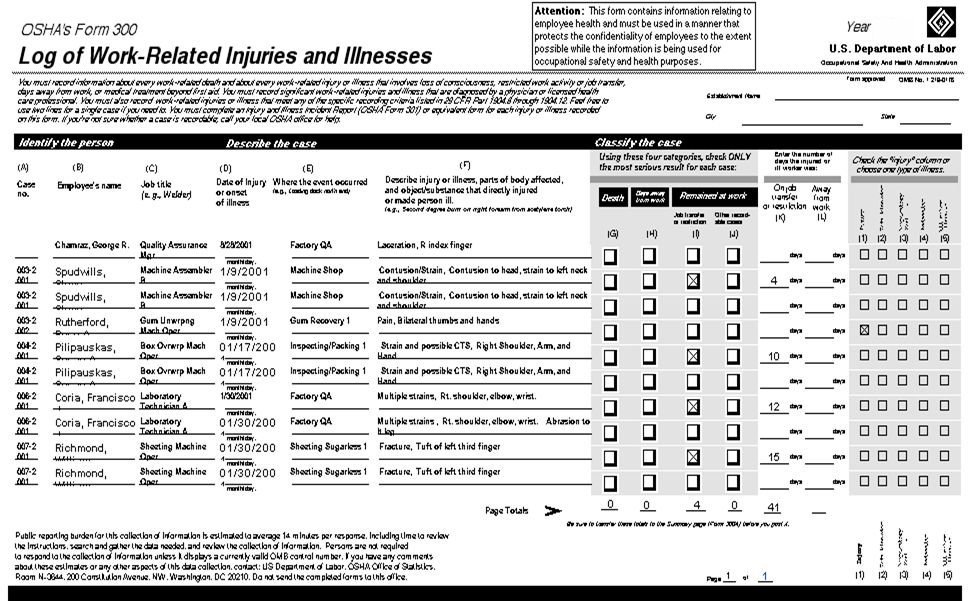Keeping Injury and Illness Records
Recordkeeping is an important part of an employer's responsibilities.
Keeping records allows OSHA to collect survey material, helps OSHA identify high-hazard industries, and informs you, the worker, about the injuries and illnesses in your workplace. About 1.5 million employers with 11 or more employees-20 percent of the establishments OSHA covers-must keep records of work-related injuries and illnesses.
All of the following should be accomplished in a recordkeeping program:
- Set up a reporting system.
- Provide copies of logs, upon request.
- Post the annual summary.
- Report within 8 hours all work-related fatalities occuring within 30 days of the work-related incident.
- Report to OSHA within 24 hours all work-related hospitalizations, all amputations, and all losses of an eye that occur within 24 hours of the work-related incident.
Workplaces in low-hazard industries such as retail, service, finance, insurance, and real estate are exempt from recordkeeping requirements.
For specific information on exactly which cases must be recorded, you can go to Title 29 of the Code of Federal Regulations (CFR) Part 1904 - "Recording and Reporting Occupational Injuries and Illnesses."
The Log of Work-Related Injuries and Illnesses (commonly called the OSHA 300 Log) is used to list injuries and illnesses and track days away from work, restricted, or transferred.
The Injury and Illness Report (Form 301) is used to record more information about each case. Employers can use a workers' compensation or insurance form, if it contains the same information.
The Summary (OSHA Form 300A) shows the totals for the year in each category. A company executive must certify that he or she has examined the OSHA Log and believes that the annual summary is correct and complete. The summary must be posted from February 1 to April 30 of each year in a place where notices to workers are usually posted, such as an employee bulletin board.
Knowledge Check Choose the best answer for the question.
3-5. Report to OSHA within _____ all work-related fatalities occurring within _____ of the work-related incident.
You forgot to answer the question!

